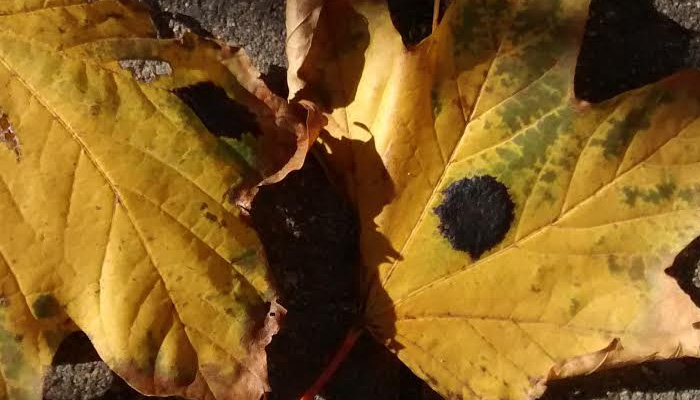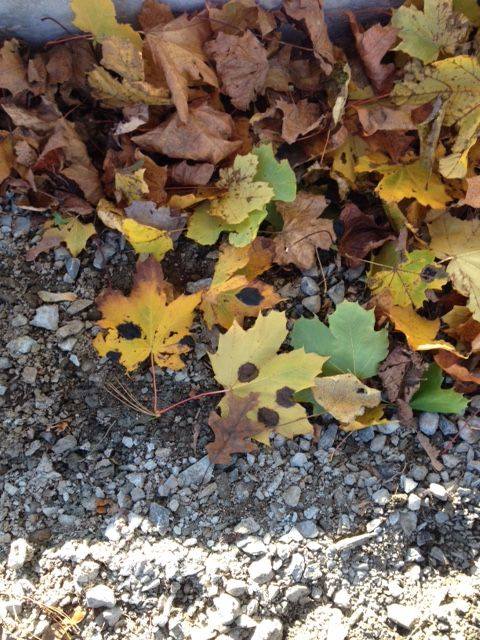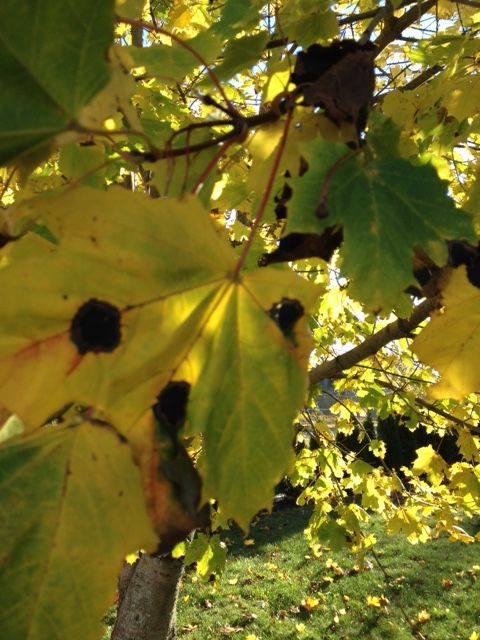Tar Spot of Maple may make Good Neighbours

By Marian Munro
Dozens of folks over the years have asked about the black spots on the maple trees around the city of Halifax-Dartmouth. These sooty black marks are rarely seen on only one tree. Usually all maples nearby will enjoy these additional adornment. Their presence indicates an infection by a fungus in the genus Rhytisma. Healthy trees can withstand these attacks, although heavy infestations can cause the tree to lose leaves early.
On urban trees we see it on the Norway Maples. The cycle begins by the appearance of small yellowish spots in June, which turn black in July and August as they expand in size.
Different maple species are attacked by different fungi species. As leaves drop and remain on the ground, the fungus overwinters in the leaves. Spores are released the next spring as the young leaves unfurl, completing the cycle. The spores land on newly opened healthy leaves and cycle renews. One can only imagine how far and wide the infection spreads with a municipal composting program and a city filled with maple trees.
Control by the home owner merely involves raking, gathering leaves and burning them rather than composting them. Spread is thus reduced. Sprays are not required. But this may require owners of nearby trees to do the same if a neighbourhood or street wishes to eliminate the fungus.
Should you compost your own leaves, make sure to turn the compost before leaves open in May.
If leaves are withering and turning brown before dropping, secondary infections may be present.

Norway Maple leaves with typical "tar spot" photo taken November 9 by Marian Munro

Norway Maple tree with leaves still on, showing large tarry spots, about 2cm across. Photo taken November 9 by Marian Munro